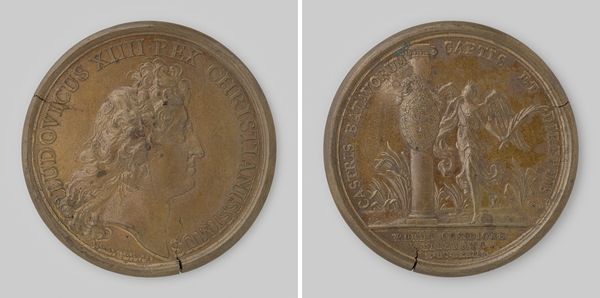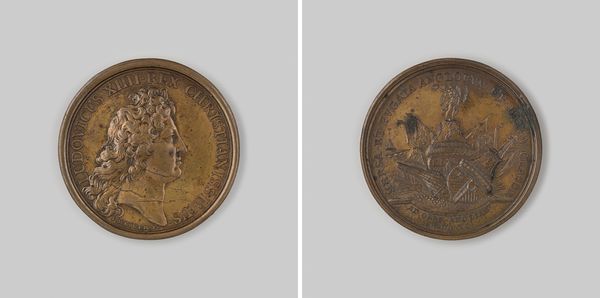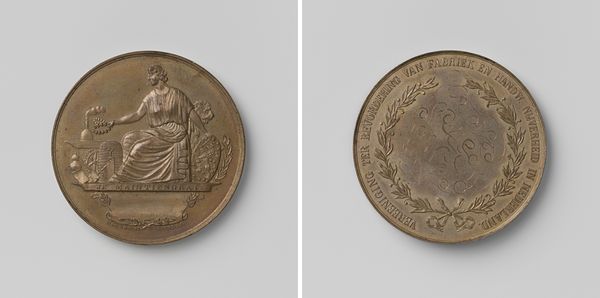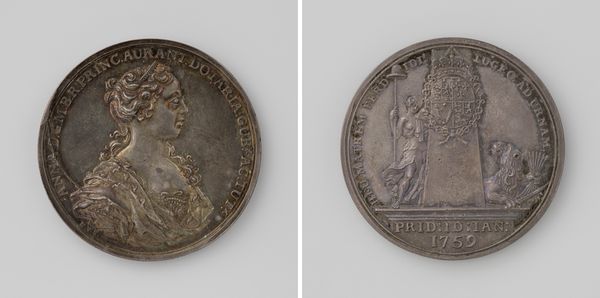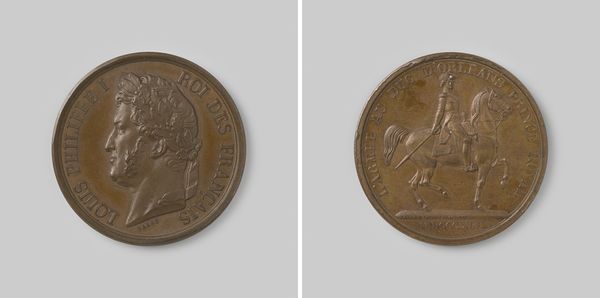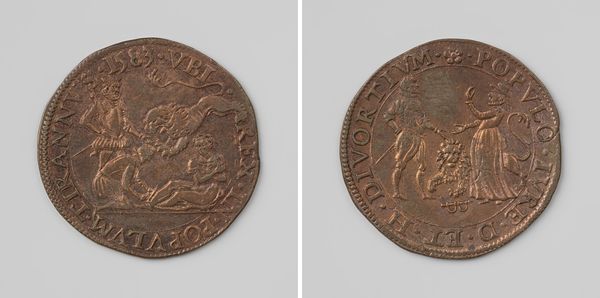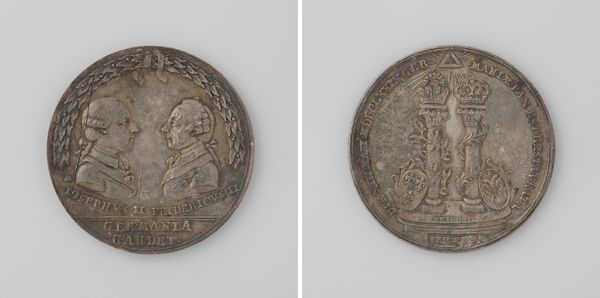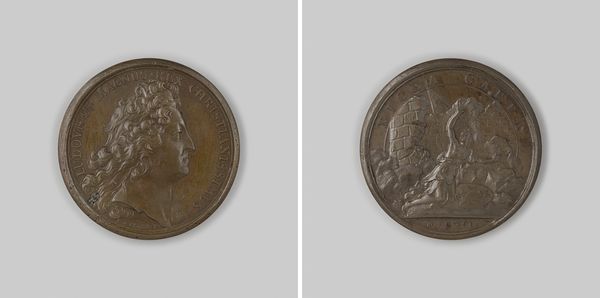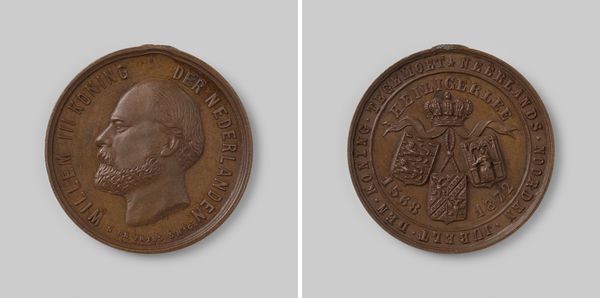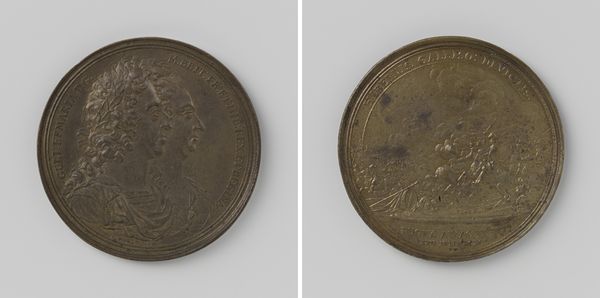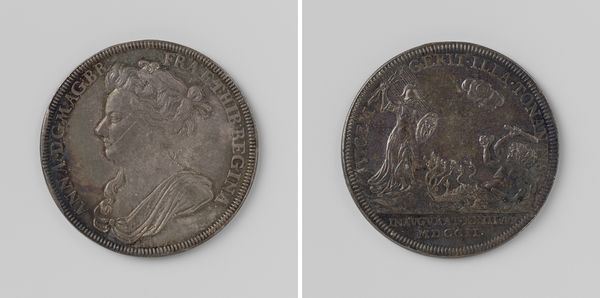
metal, bronze, sculpture
#
portrait
#
baroque
#
metal
#
bronze
#
sculpture
#
history-painting
Dimensions: diameter 4.1 cm, weight 28.94 gr
Copyright: Rijks Museum: Open Domain
Editor: So, this is "The English and Dutch Fleet Destroyed by the French" by Jean Mauger, cast in bronze in 1690. It depicts a naval battle… on a coin! I’m struck by how such a grand, chaotic event is captured in this tiny, almost peaceful form. What strikes you about it? Curator: You know, I love that juxtaposition, the monumental shrunk down. To me, it’s a perfect example of Baroque propaganda, you see? This wasn't just a pretty picture, but a very pointed message about French naval supremacy under Louis XIV. The artist even inscribed around the coin, boasting of his victory. I wonder if the weight of the bronze feels like power in your hand. What do you think of the composition of the naval ships versus Louis XIV profile on the other side of the coin? Editor: Hmm, I see what you mean. One side displays the portrait of the proud king. It’s like a victory statement to me, showing two defeated forces by presenting the king larger-than-life to the masses. And bronze… there’s a permanence to it. Do you think the choice of material contributes to the propagandistic purpose? Curator: Absolutely! Bronze speaks to timelessness, prestige, and authority. And Mauger’s choice of Baroque style adds to the drama; a visual shout instead of a whisper. Now, does that symbolism enhance or detract from your appreciation of the art? Editor: It makes it more complex, definitely. Knowing the intentions behind the work gives it an added layer, even if I don’t necessarily agree with them! Curator: Precisely. It’s a tiny, shiny history lesson. Art whispers and shouts simultaneously; you just need to listen closely to hear the echoes. Editor: Exactly! Thanks, I hadn’t thought about it quite that way. Looking at historical art with today's eyes creates so much richer meanings than I originally understood!
Comments
No comments
Be the first to comment and join the conversation on the ultimate creative platform.
